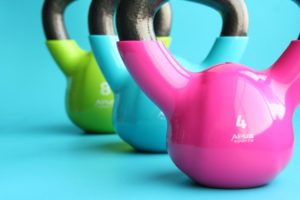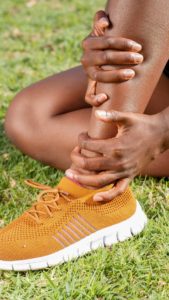After a long winter on the couch, it can be tempting to jump into exercise or sports the second the weather warms up. Unfortunately, our bodies require a slower gearing up to avoid injury. Here’s how to get back to being active this spring without hurting yourself:

Always Warm-up
Warming up is the most critical thing you can do to prevent injury. “Warming up” simply means increasing your activity slowly over the course of several minutes. This gradually raises your heart rate and gets your muscles ready for strain. A warm-up should last five to ten minutes. A brisk walk, some jumping jacks, or a slow jog can be used to warm up. You can also do shoulder rolls, knee-highs, lunges, or squats. Combine different exercises to warm up all the muscles you will be using in your workout.
One of the main goals when doing a warm-up is to increase flexibility. Try to include exercises that stretch your muscles. You can also do a stretching routine right after your other warm-up exercises. It can be tempting to stretch before your warm-up, but you will get a better stretch if you save it for after.
Warming up is always important, no matter your fitness level, but if you spent months on the couch, it’s even more vital. You may need to warm up longer when you are first becoming active again. You might notice that your hamstrings are tight, and your glutes and core are weak from sitting too much. Pay extra attention to these areas when warming up and stretching.

Start Slow
You may have had your all-time best bike ride last fall, but if you haven’t maintained that activity level over the winter, you can’t jump back to that point this spring. Start slow and set realistic goals. The SMART goal setting system says your goals should be Specific, Measurable, Attainable, Realistic, and Time-Sensitive. For instance, you could set a goal to be back at last summer’s endurance level by the end of May, then plan your workouts accordingly. Remember that nothing is written in stone. It’s essential to listen to your body and not overdo it.
To start out, you can try doing a short, low-intensity workout every day or aim for a moderate intensity session a couple of times a week. Stay consistent and gradually build intensity as your body can handle it. Make sure to schedule rest days between your workouts. Active rest days include some low-intensity activities like taking a walk; this can help your muscles recover after a more strenuous day. Passive rest days might involve sitting around watching Netflix. Both types of rest days are necessary. Many injuries happen when people don’t give themselves rest days or when they go all out too soon.

Get Adjusted
Your back and neck are probably not in their best condition after a sedentary winter, so go in and see your chiropractor. Getting your spine aligned and healthy will reduce your chance of injury and improve your immune system and endurance. Your spine is a moving part, and your chiropractor can help keep it aligned as your body changes this spring. Getting adjusted regularly will keep you pain-free and able to perform.

Track Your Progress
Remember the second step of goal setting? Your goals should be measurable. That means you need to track your progress to know how close you are to meeting your goal. If your goal is to add five minutes to your workout every week, chart this out on paper, check off when you succeed, and make notes when you have to adjust that goal. You can use a wearable device to track fitness metrics like heart rate variability, heart rate, and blood oxygen. You may notice that it’s taking you longer to get into your target heart rate zone after several weeks of regular workouts. This is a sign of increased cardiovascular endurance. Metrics like this can let you know when it’s time to up the intensity of your workout.
Another great way to measure progress is to hire a personal trainer or utilize a training service at your gym. A good trainer can coach you through your workouts and perform fitness tests to see how you are progressing.

Round Out Your Healthy Lifestyle
A goal to get in shape again needs to include more than just exercise. Cleaning up your diet and eating an appropriate number of calories are also vital steps. When you are trying to build muscle and cardio endurance, your body needs good nutritional support. Try to eat complex carbohydrates, avoid excess sugar and make sure you are eating enough protein to support your fitness goals. Eat healthy fats in moderation and try to cut chemical additives out of your diet.
You’ll need to get enough sleep so your body can repair and be ready for strenuous activity. Most adults should aim for 7-8 hours per night.
Hydration is also critical, especially when you are increasing your activity level. Even mild dehydration can make you feel fatigued and make it hard to get through a workout and to recover afterward. There has been some debate on how much water we need every day. According to the U.S National Academies of Science, Engineering, and Medicine, men need 15.5 cups (3.7 liters) per day and women need 11.5 cups (2.7 liters). Of course, you should use common sense and drink more if you have been out in the heat or done a strenuous workout. Using a marked water bottle can help you stay on track.

Treat Injuries Right Away
If, despite your best efforts, you end up injured, get treatment immediately. The sooner you take care of it, the sooner it will heal so you can continue your fitness journey. Our Chiropractors in Caledonia offer non-invasive treatments for sports injuries that speed healing, decrease pain and increase range of motion.





